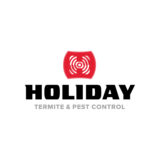Many insects don’t like the cold and will seek shelter, food and water in your home where it is nice and warm when the weather turns cooler. When insects come inside for the winter, there is a term you may hear, which may be a new term to you, “overwintering.” This word is used to describe how insects, plants and other animals spend their time in the winter months. However, the definition can be more complicated when used for insects.
What Does Overwintering Pests Mean?
In simple terms, overwintering describes how insects may hibernate in the winter in order for them to survive the cold. During overwintering, an insect’s growth and development will halt in the winter, which is referred to as diapause. An insect either goes through biochemical and physiological changes in order to survive in the winter, or they have means to avoid the cold. Sometimes insects will migrate to areas more conducive to their survival during the cold months of winter.
Stages of Overwintering Pests
There are different ways that insects overwinter; depending on which stage of life they are in and the type of insect. Here are some examples of overwintering methods for insects.
Adult insects overwintering is much like bears hibernating in caves. They go dormant until the spring. Adult stink bugs overwinter in this manner.
Larvae are wingless, immature insects in their feeding stage. They will overwinter by burrowing deep into leaves, mulch or soil seeking warmth. Some larvae have an antifreeze like substance called glycerol in their systems to help them to withstand the cold. Caterpillars and woodborers are examples of insects that overwinter in this manner.
Nymphs are the young ones in the insect world. They are usually inactive during overwintering, but some types of insects in this stage will survive the winter by living in ponds and streams under the layers of ice. Crickets and dragonflies are the types of insects that overwinter by such means.
Pupae is the non-feeding, transitional stage of insects. When pupae, such as moths and house flies, overwinter, they will emerge in the spring as adults.
Eggs are laid by some insects, like mosquitoes and grasshoppers, in the fall so that the insect can hatch in the spring after overwintering.
Even though they usually don’t emerge until the weather starts getting warmer in the spring, some insects that use your home’s eaves, siding or the cracks in your home’s foundation for shelter while overwintering will emerge early inside the warmth of your house. This can easily lead to a pest infestation.
How to Prevent Overwintering Pests
You can prevent this early emergence by sealing holes, crevices and cracks in your foundation, caulk around pipes leading outdoors and repair holes in your siding or eaves. Also replace or repair any damaged window and door screens where pests can enter.
By being diligent and finding problem areas and repairing them, you can prevent insects from invading your home in the winter months. You can also keep most pests at bay throughout the year by performing the same repairs.







